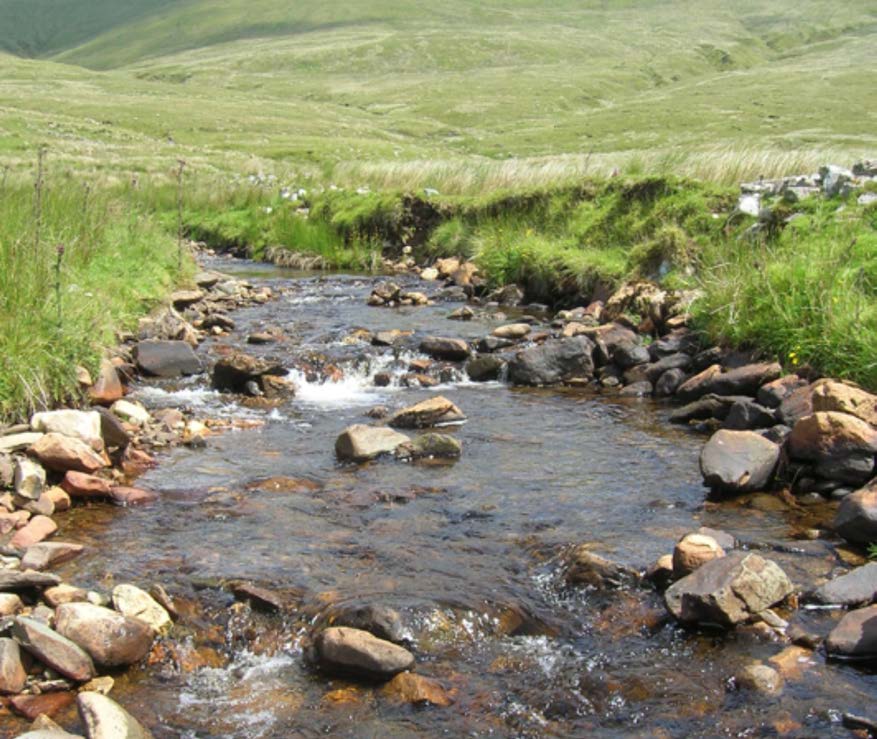A Hydrogeologist is a scientist who studies groundwater in the…
Irish stoneflies: two threatened with extinction
A recent evaluation of Irish stonefly has seen two stonefly species added to the Red List of species threatened with extinction, and one species declared extinct in Ireland. Hugh Feeley tells us more these fascinating species and how climate change and water pollution are causing them problems.
Stoneflies are an extremely important component of the natural biodiversity of Irish freshwaters. Although small and inconspicuous insects that spend most of their lives amongst the stony habitat of our streams, rivers and lakes they can constitute a significant proportion of the invertebrate biomass and are an important part of the diet of fish in aquatic food-chains as well as nutrient flows and recycling in riverine systems.
As adults they don’t live for long (days to weeks) but are food sources for birds and bats, and amongst fishermen, stoneflies are well-known and have attracted common and local names.

Examples include Brachyptera risi which is known as the February Red and Protonemura meyeri which is the Early Brown or Winter Brown. Stoneflies of the family Leuctridae are commonly known as needle-flies, the two Irish species of Perlidae are known as Large Stonefly, while Isoperla grammatica (Poda) is known variously as a Yellow Sally or Old Joan.
The status of Irish stoneflies, known scientifically as Plecoptera, was recently evaluated against the Red List criteria produced by the International Union for the Conservation of Nature (IUCN). This is the first time the threat status of the Irish stoneflies has been assessed and it highlights some worrying trends.
The evaluation was based on just over 12,000 records for the island of Ireland, covering all 20 species. Results identified two species deemed under threat of extinction on the island of Ireland: Protonemura praecox, was assessed as Critically Endangered (which is the highest level of threat) and Capnia atra as Vulnerable.

A third species, Perlodes mortoni, was unfortunately deemed Regionally Extinct in Ireland as it has not been recorded for over 100 years. This species was last recorded in 1901 along the River Glyde in Castlebellingham, Co Louth. The remaining 17 species are assessed as Least Concern, meaning they are considered not under threat.
The threat status assigned to the two threatened species quite likely reflects increasing average temperatures associated with climate change. Protonemura praecox has not been seen in Ireland since 1991 and there is concern for its remaining populations, while Capnia atra is a glacial relict species confined to a small number of sites in the west. Ireland is at the most southerly extent of this species European distribution and as temperatures rise it is quite probable that we will lose this cold-water specialist. Other species, such as Diura bicaudata, which have populations predominantly confined to higher altitudes may become threatened in the near future as temperatures continue to rise.
Indeed, the threats that climate change, but also the continuing organic pollution, habitat change, and sedimentation, as highlighted by the latest EPA water quality in Ireland report, pose to the stoneflies (and other aquatic species) in Ireland should not be underestimated, with most species highly susceptible to one or more of these pressures.
Habitat destruction and changes to the natural flow and physical environment of lakes and rivers are likely to have had a significant influence on the present distribution of the Irish stoneflies and the impact of these pose continuing and significant threats. In some respects, this assessment of stoneflies is the coughing ‘canary in the coal mine’ and unless action is taken on climate change and water pollution more and more species found in our rivers and lakes will begin to disappear across the island. The Red List was produced by National Parks and Wildlife Service (Department of Culture, Heritage and the Gaeltacht) and Northern Ireland Environment Agency, with acknowledged information and data provided by the Environmental Protection Agency and University College Dublin.
Hugh Feeley, EPA Ecological Monitoring and Assessment Unit
Learn more:








